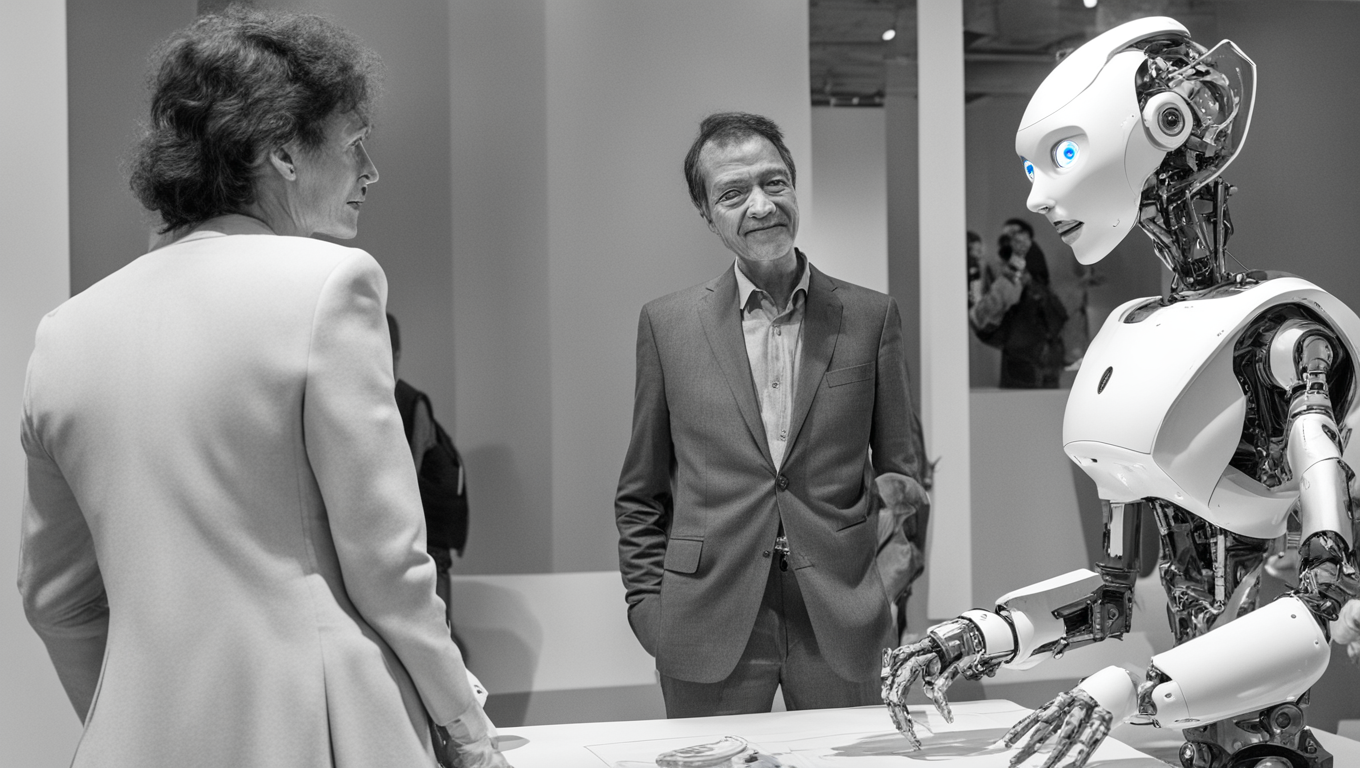The future of robotics has arrived, and its name is Ameca. This remarkable humanoid robot, designed to look and act like a human, is set to be showcased at the National Robotarium in Edinburgh, Scotland. Through the use of artificial intelligence (AI), Ameca can interact with people in a natural and engaging way.
Equipped with cameras for eyes and microphones for ears, Ameca is capable of pulling facial expressions, using advanced motorized components and smart facial recognition software. The goal of this project is to foster better understanding and communication between humans and robots.
The National Robotarium, known as the UK’s center for robotics and AI, has acquired Ameca from Engineered Arts and plans to take it to public events, schools, and workshops throughout Scotland. This initiative aims to familiarize people with the latest advancements in human-shaped robots and provide all ages with an opportunity to learn about them.
What sets Ameca apart is its ability to understand and communicate in multiple languages, including English, German, French, Chinese, and more. It can even differentiate between different dialects and fluently engage in complex tongue twisters. The possibilities for integration and interaction are truly remarkable.
The concept of humanoid robots has been a topic of discussion for quite some time. Visionaries like Stephen Hawking and Elon Musk have cautioned about the potential risks associated with AI, with concerns ranging from the existential threat it poses to the idea that robots could ultimately “take over the world.” While these concerns are valid, robotics experts believe that the integration of human-shaped robots into society will occur gradually over the next few decades.
Professor Noel Sharkey of the University of Sheffield predicts that these robots will become a part of our everyday lives, working alongside us as shop assistants, doctors, receptionists, and even caregivers for the elderly and children. While he believes there is no cause for alarm, he does caution against the possibility of humanoid robots resembling humans too closely, as they could be used to deceive us.
Lisa Farrow, representing the National Robotarium, acknowledges the phenomenon known as the “uncanny valley” as one of the biggest barriers between humans and humanoid robots. This feeling of unease arises when lifelike features fall short of convincingly realistic. To address this, the National Robotarium is using Ameca as an opportunity for people to engage with humanoid robots and better understand their capabilities and benefits.
The Scottish tour featuring Ameca aims to make robotics more accessible, natural, and relatable to humans in their homes and jobs. By allowing people to have personal interactions with robots like Ameca, the hope is that this technology will become more familiar and accepted, especially among the younger generation.
Feedback thus far has been positive, with accounts of people, even seven-year-old children, being delighted and engaged by Ameca. Overcoming initial skepticism, this new generation seems to be growing up with technology like humanoid robots and embracing their presence.
Steve Maclaren, the chief operating officer at the National Robotarium, sees Ameca as a major milestone in their mission to make robotics more relatable and accessible. Through interactions with Ameca, they hope to demystify robotics, build trust in human-robot interaction, and showcase the remarkable potential of these technologies to improve our daily lives and benefit society as a whole.
The future is now, and robots like Ameca are leading the way. As we learn to coexist with these human-shaped machines, we have the opportunity to shape a future where robots are not only our companions but also invaluable assistants in our everyday lives.





Use the share button below if you liked it.